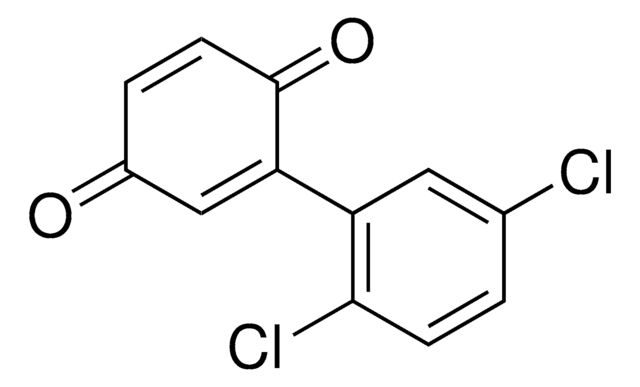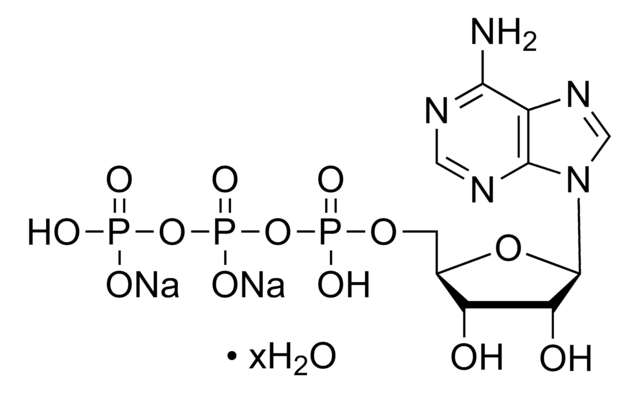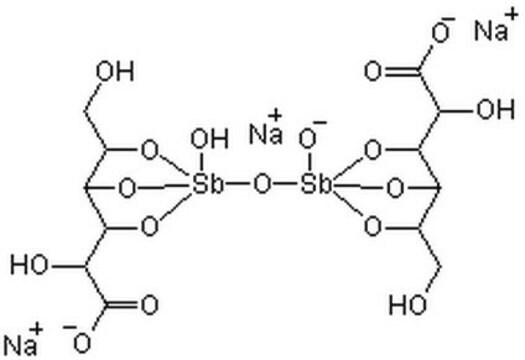565851
NSC-87877
≥97% (HPLC), solid, SHP1/2 PTPase inhibitor, Calbiochem®
Synonim(y):
SHP1/2 PTPase Inhibitor, NSC-87877, 8-Hydroxy-7-(6-sulfonaphthalen-2-yl)diazenyl-quinoline-5-sulfonic acid, Disodium Salt, HePTP Inhibitor II, PTP Inhibitor XXV, PTP1B Inhibitor IV, SHP1 Inhibitor I, SHP2 Inhibitor I
About This Item
Polecane produkty
Nazwa produktu
SHP1/2 PTPase Inhibitor, NSC-87877, The SHP1/2 PTPase Inhibitor, NSC-87877, also referenced under CAS 56932-43-5, controls the biological activity of SHP1/2 PTPase. This small molecule/inhibitor is primarily used for Phosphorylation & Dephosphorylation applications.
Poziom jakości
Próba
≥97% (HPLC)
Formularz
solid
producent / nazwa handlowa
Calbiochem®
warunki przechowywania
OK to freeze
desiccated (hygroscopic)
protect from light
kolor
red-brown
rozpuszczalność
water: 10 mg/mL
Warunki transportu
ambient
temp. przechowywania
2-8°C
ciąg SMILES
[Na+].[Na+].[S](=O)(=O)([O-])c1cc2c(cc(cc2)N\N=C3/C=C(c4c(nccc4)C/3=O)[S](=O)(=O)[O-])cc1
InChI
1S/C19H13N3O7S2.2Na/c23-19-16(10-17(31(27,28)29)15-2-1-7-20-18(15)19)22-21-13-5-3-12-9-14(30(24,25)26)6-4-11(12)8-13;;/h1-10,21H,(H,24,25,26)(H,27,28,29);;/q;2*+1/p-2/b22-16+;;
Klucz InChI
YOGRUDWAJPVHEL-LLDDCTHSSA-L
Opis ogólny
Działania biochem./fizjol.
SHP1/2 PTPase
Opakowanie
Ostrzeżenie
Rekonstytucja
Inne uwagi
Informacje prawne
Kod klasy składowania
11 - Combustible Solids
Klasa zagrożenia wodnego (WGK)
WGK 2
Temperatura zapłonu (°F)
Not applicable
Temperatura zapłonu (°C)
Not applicable
Certyfikaty analizy (CoA)
Poszukaj Certyfikaty analizy (CoA), wpisując numer partii/serii produktów. Numery serii i partii można znaleźć na etykiecie produktu po słowach „seria” lub „partia”.
Masz już ten produkt?
Dokumenty związane z niedawno zakupionymi produktami zostały zamieszczone w Bibliotece dokumentów.
Klienci oglądali również te produkty
Nasz zespół naukowców ma doświadczenie we wszystkich obszarach badań, w tym w naukach przyrodniczych, materiałoznawstwie, syntezie chemicznej, chromatografii, analityce i wielu innych dziedzinach.
Skontaktuj się z zespołem ds. pomocy technicznej








